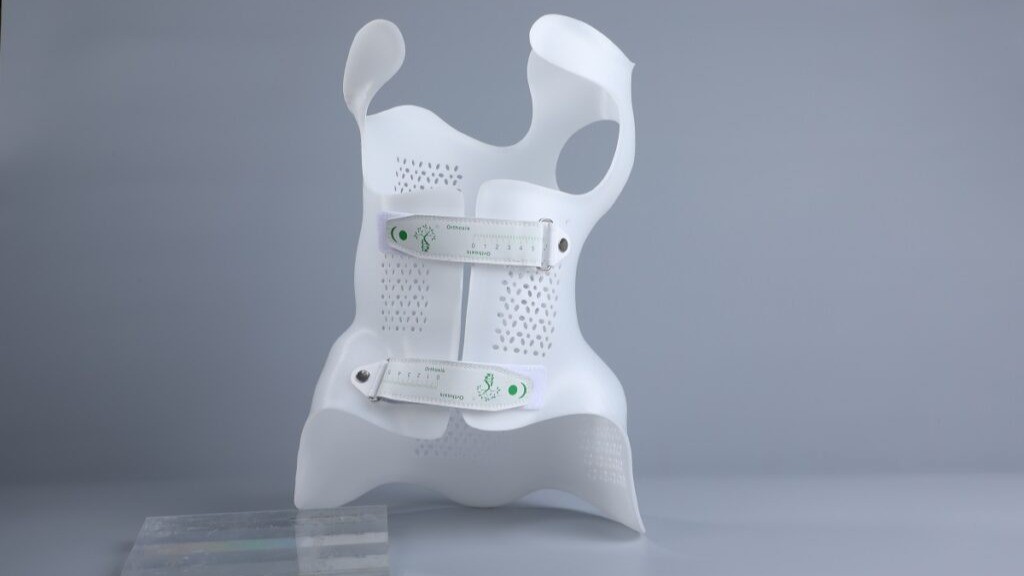
3D Printed Scoliosis Braces Transforming Modern Orthotic Care
3D Printed Scoliosis Braces Transforming Modern Orthotic Care Scoliosis is a spinal condition defined by an abnormal sideways curvature of the spine, often developing during

CDG’s Replik8 Team received a request from Culinary Concepts about a project from a new restaurant in the heart of Mayfair, London that required turning a real crab into a newly manufactured replica Brown Crab dish in which to serve their impressive dressed crab menu choice.
"While our sculpting team is highly accomplished, the level of accuracy and tight deadline required for this project made us immediately think of CDG. How could we create a realistic crab dish on such a short timeline? By using a real crab and having it 3D scanned and printed!" says Emma B at Culinary Concepts.
The first step was to find a solution to scan the crab in order to collect all the data required to convert the scan to a CAD file, in order to transform the real crab into a replica brass container. To maintain the exact shape of the crab the team visited Culinary Concept offices to 3D scan a frozen crab (as quick as possible, before defrosting). To complete this first step we used the FreeScan Combo+ IR and Laser 3D scanner with it’s different modes to help capture the grab quickly, using the 90 laser line mode, and to capture the fine detail using the single laser line mode.


Step two, after scanning the crab, was to work with the 3D data collected to ensure the quality is maintained and to start the design side of creating a container from the scan file. To achieve this with ease we used the scan-to-CAD software Geomagic Design X to smooth the scanned surfaces but also to cut away the top of the crab to create a container.


The final step for our team was to 3D print the crab ready to be cast in brass by Culinary Concepts. To accomplish the final task for our Replik8 Team we needed to use a ProJet 2500 Plus MJP 3D Printer a high resolution (16 microns) resin 3D printer from 3D Systems. The material we used was a castable resin called VisiJet M2P-CST Crystal™

3DSystems MJP 3D Printed model in castable resin
Once 3D printed we shipped the model to Culinary Concepts for them to cast the crab in brass through their factory in India. To cast the crab each leg and claw was separated, and individual moulds were made for casting in brass. The brass pieces were then meticulously welded back onto the main body, resulting in a stunning, lifelike brass crab, explained Emma B.


Cast brass crab
"We were thoroughly impressed with CDG’s service. Their professionalism, attention to detail, and quick turnaround — even in the face of last-minute changes — made what could have been a very difficult project feel straightforward. Both the 3D print and the final bronze piece were outstanding. Thank you, CDG!” says Emma.

Web: https://cdg.uk.com/replik8/
Email: replik8@cdg.uk.com

3D Printed Scoliosis Braces Transforming Modern Orthotic Care Scoliosis is a spinal condition defined by an abnormal sideways curvature of the spine, often developing during

Touch™ Haptic Arm is a mid-range, professional haptic device used in research, 3D modelling and OEM applications Touch is a motorized device that applies force

3D Systems announce MJP 300W Plus wax 3D Printer as the new GOLD Standard for investment casting wax models. Premium quality, speed and efficiency The

INTAMSYS Launches the FUNMAT PRO 310 APOLLO: Redefining Continuous Production with High-Speed, High-Strength PEEK & PAEK 3D Printing Over the past decade, FFF 3D printing

Culinary Concepts & the story of the Brass Crab When a Crab, a 3D Scanner and a 3D Printer come together to create a replica